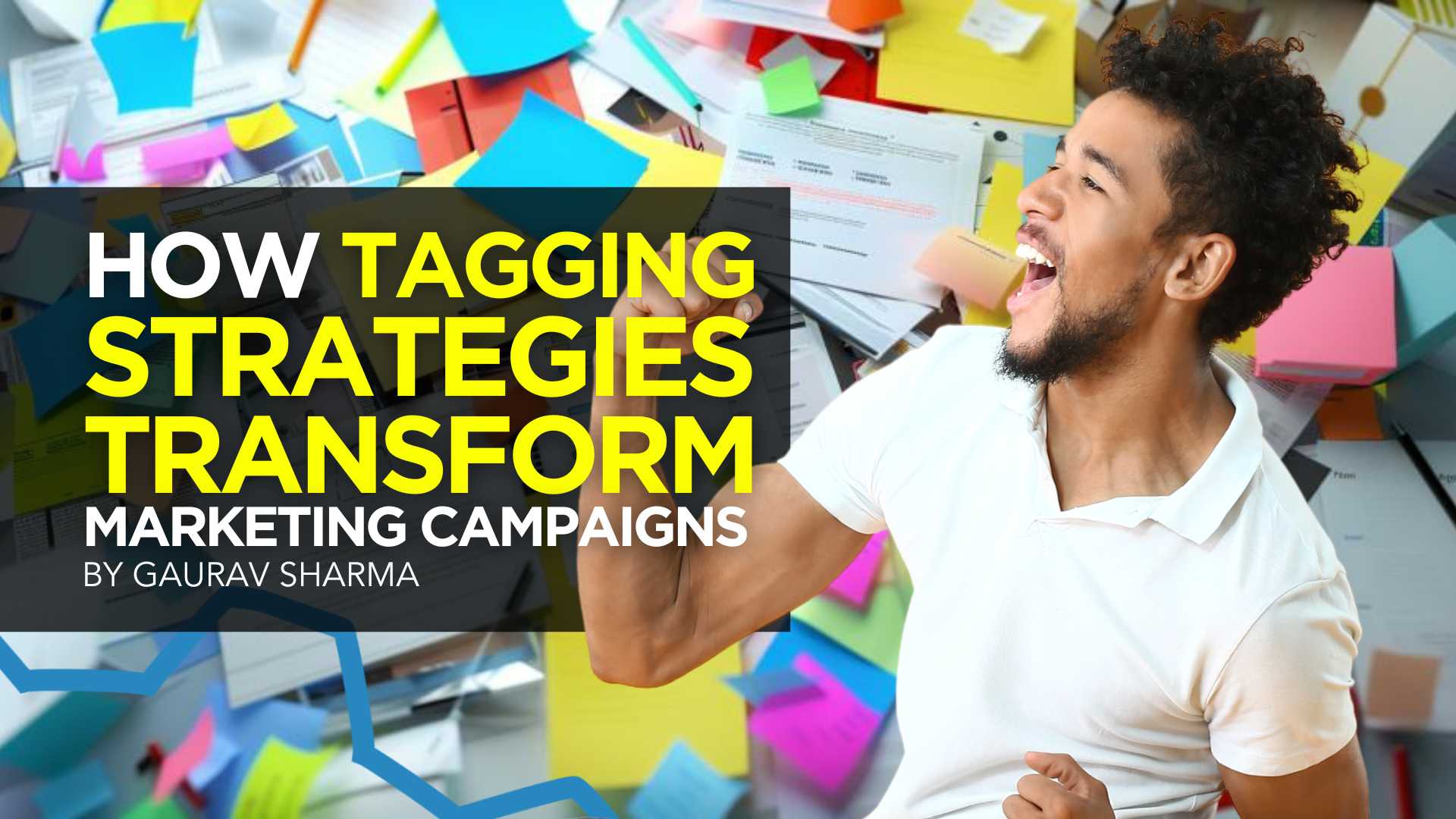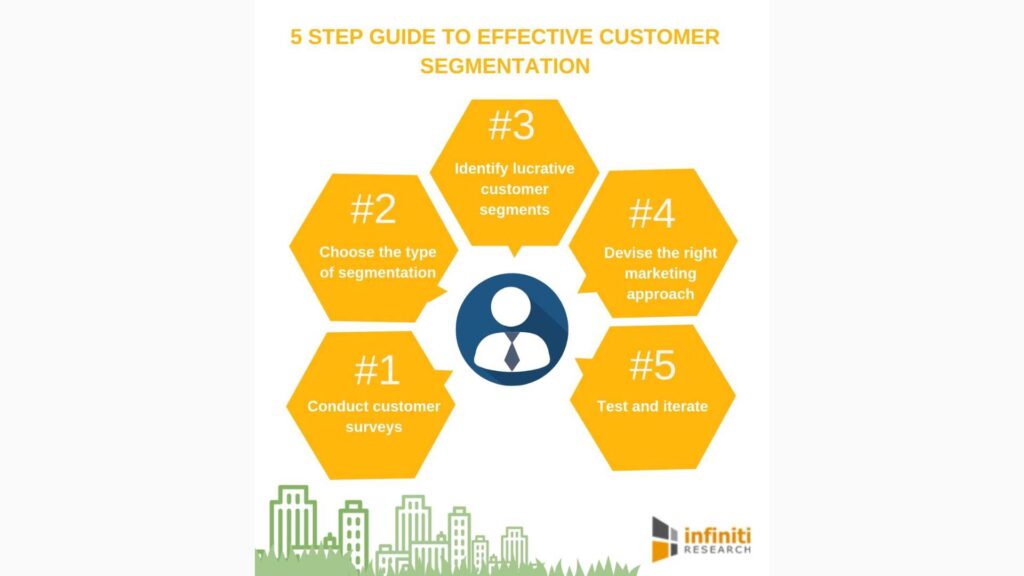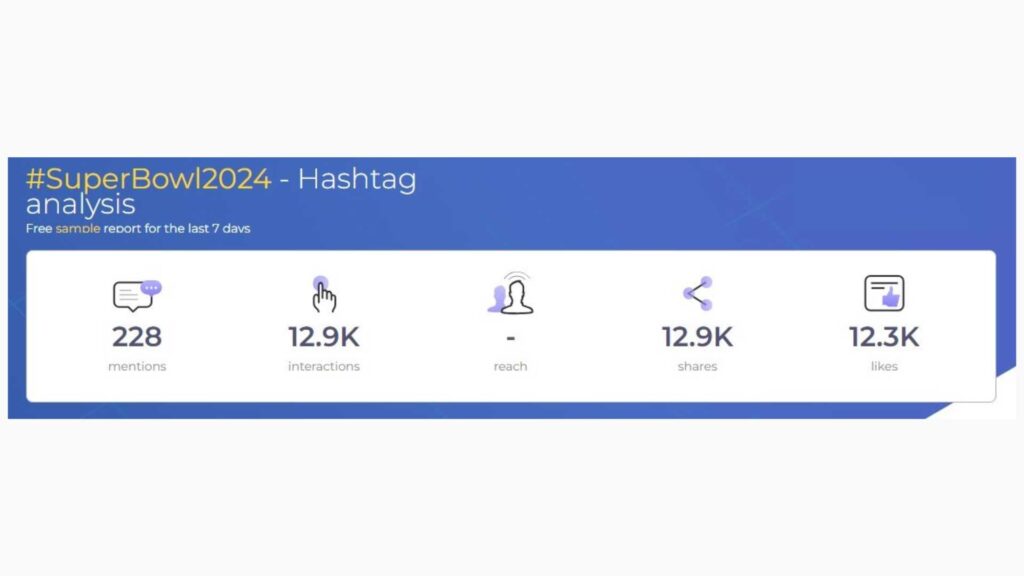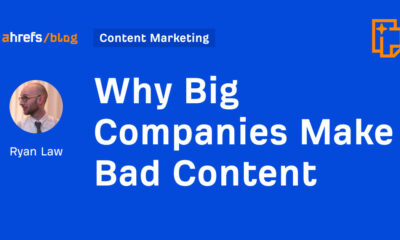MARKETING
How to Unite Content Marketing and SEO Strategies [Sponsored]
![How to Unite Content Marketing and SEO Strategies [Sponsored] How to Unite Content Marketing and SEO Strategies [Sponsored]](https://articles.entireweb.com/wp-content/uploads/2022/02/1646056908_How-to-Unite-Content-Marketing-and-SEO-Strategies-Sponsored.png)
You already recognize the value of using content to attract new prospects and retain loyal customers. And, like most of us, you’ve probably built your content strategy on the guiding principles of search engine optimization (SEO).
But, in today’s hyper-competitive content marketing environment, perfecting your content purely from an SEO standpoint is no longer enough to reach your target audience and generate valuable leads. If you want to keep attention on your brand, it’s essential to reevaluate your content strategy to deliver value that goes beyond keywords and social media snippets.
In this article, you’ll learn why savvy marketers need to avoid focusing solely on SEO. You’ll also discover ways to kickstart your content marketing strategy so it caters to your customers’ true content preferences.
Keep reading to learn how to develop a data-driven content strategy that will keep you ahead of your competition.
Key takeaways:
- A successful marketing strategy combines the power of SEO and content.
- Content marketing that utilizes data will attract, engage, and convert your target audience even more.
- To drive more impact, your content needs to be easily shareable and searchable.
According to recent data, 68% of trackable website traffic begins with a search. SEO is a strategy that focuses on optimizing the content published on your website so it ranks higher on organic search engine results pages (SERPs) and helps build your brand’s domain authority.
In theory, the higher your content ranks on a SERP, the more likely new prospects will click on the links that lead to your website, where they can convert as customers. But as search algorithms are constantly evolving, you’re forced to continually update your SEO strategy to ensure it meets Google’s latest criteria. This means building your content strategy around SEO considerations alone will never be the most practical or cost-effective long-term solution.
On the other side, content marketing focuses on developing quality content that engages your target audiences and provides them with valuable information about your brand, your products or services, and other relevant topics they care about. With a successful content strategy, you can establish trust and build credible authority in your industry. Of course, if prospects can’t find your content when they’re searching, your creative development efforts are going to waste.
To ensure the SEO and content marketing strategies you’re building will complement each other, here are a few steps you’ll need to take:
- Understand your audience: Researching your ideal prospect’s challenges, needs, and interests ensures that your content will appear to the right people when they do a search.
- Conduct keyword research: Finding the right keywords to use in your content will help you rank higher in search results and reach more of the people you’re targeting.
- Develop more-informative content: Creating relevant content for your customers will improve your engagement, rankings, and overall authority. Even more importantly, it can help you stand out from your competitors.
Remember – it’s not about choosing content marketing over SEO. Instead of viewing the tactics as separate, the key is to take a holistic approach where SEO and content can work together in parallel, thus driving more engagement and conversions.
Yes, SEO does have a vital role to play in content success. But when it comes to your overall marketing strategy, the old saying, “content is king” rings true. Industry research supports this. For example, 82% of marketers in HubSpot’s 2021 industry report say they actively use content marketing. However, simply creating content isn’t enough to ensure that you’ll achieve strong returns on your content investment.
One key to becoming more successful with your content development strategy is to use data to understand your audience’s preferences – both within your industry and across the greater content landscape.
Today, there are advanced platforms and tools that utilize AI and machine learning to analyze data that go beyond SEO results. Contrend, for example, is a SaaS content marketing platform that looks at more than 20 different data sources to learn and recommend the best tones, styles, images, and formats of content that your target audience wants to consume.
With these deeper, concentrated data insights, you can develop a content strategy that will lead you to create content that converts more reliably and delivers the best possible ROI. For example, videos, blogs, and e-books continue to rise in popularity due to their digestible nature. But your target audience may actually prefer engaging with another form of content – something you’ll only know if you have the right data on hand.
![How to Unite Content Marketing and SEO Strategies [Sponsored] Videos, Blogs, and eBooks are the Primary Content Formats](https://articles.entireweb.com/wp-content/uploads/2022/02/How-to-Unite-Content-Marketing-and-SEO-Strategies-Sponsored.jpg)
Some types of content may be more popular, but will they perform better than others? (Via HubSpot)
Now, this doesn’t mean you should kick your SEO strategy to the curb and just concentrate on creating content. You need to focus on making content marketing work alongside SEO. Here are a few reasons why:
Valuable content answers questions and solves problems
First off, technical SEO aspects like headlines, alt attributes, and URL structure are essential to maintaining an optimized and crawlable website. However, whether you rank number one or number 21 in search results, technical SEO won’t keep someone engaged once they reach your website. In fact, it could lead to a higher bounce rate if your content isn’t meeting your visitors’ expectations.
Within your content, use your list of targeted keywords and similar relevant search terms naturally to signal to search engines that your website is a good match for the original search intent.
While “quality” content isn’t a new concept for marketers, it goes well-beyond keywords when it comes to meeting your customers’ needs:
- The content needs to be completely original and offer unique information that only your brand can share, which is an excellent opportunity to leverage thought leadership.
- Typically, a user lands on your content because they’re looking for an answer to their question. Make sure you include actionable tips and insights throughout your content to help them solve their original inquiry.
- For your content to reach “royal status,” it needs to stand alone as an evergreen resource.
The more you develop customer-centric content and build credibility, the more backlinks and industry authority you’ll earn. It’s a win-win!
Sharable content on social media helps your brand rank
Your audience uses the internet and social media to find answers, build relationships, and share content. Even if SEO gets you in front of your audience, it doesn’t guarantee that they will like you or want to share your content with others in their digital social circles. While social shares don’t directly impact your Google ranking, social profiles typically appear high in search results, letting search engines and potential customers know that you provide engaging content that’s worthy of a click.
Developing blogs is a top priority for 53% of marketers, likely because this content is highly shareable and optimizable. To create more shareable content and get your social profiles to rank higher in search results, your content should:
- Elicit an emotional response from readers
- Allow prospects to see themselves in your material
- Relate to trending topics in your industry to stay relevant
- Provide helpful advice, solutions, and answers
- Present information in visually appealing formats, like infographics
![How to Unite Content Marketing and SEO Strategies [Sponsored] Infographics Drive the Most Shares on Social Media](https://articles.entireweb.com/wp-content/uploads/2022/02/1646056907_470_How-to-Unite-Content-Marketing-and-SEO-Strategies-Sponsored.jpg)
Some types of content are more shareable than others. (Via OptinMonster)
Structure content to drive engagement and conversions
With the right SEO strategy, you have the potential to drive virtually limitless amounts of traffic to your website. However, all those website visitors contribute nothing to your bottom line if they aren’t converting into customers.
It’s essential to consider how your SEO and content marketing will impact your sales funnel. To fill your pipeline with qualified leads, structure content with these three components in mind:
- Utilize on and off-page SEO to enable your target audience to find you in search results.
- Build trust among your prospects through high-quality, high-value content that positions your brand as a clear thought leader.
- Drive conversions by helping leads feel more connected to your brand.
While SEO helps you reach the first step, you also need impactful content marketing that will engage your audience and drive them farther down your funnel towards conversion.
Instead of relying on traditional content marketing metrics like SEO and social listening, your content strategy should be built from data that delivers a complete picture of your audience’s content preferences. Applying the right data in the right way to attract, engage, and convert your target audiences not only complements your SEO strategy and goals, but it also increases your ROI.
While you’ll never control the search engine’s ranking factors, Contrend will help you build a content marketing strategy that enables you to build meaningful relationships with your target audience and increase your industry credibility.
About Contrend
Contrend is a scalable, affordable SaaS solution that harnesses the power of artificial intelligence and machine learning to recommend the topics, styles, formats, tones, and images that will convert your audience.
How? Contrend harvests data from numerous content sources, not just from SEO and social-listening metrics. In addition to top search engines, our data partners include YouTube, Alexa, Semrush, Meltwater, podcast platforms, and dozens more.
Tried and trusted by businesses around the world, including KPMG, Hilton, and Standard Chartered, Contrend can operate in any industry and market, requires limited integration, and can be rapidly deployed to help you revolutionize your content strategies, production, and reporting today.
Leverage deep data insights and predictive content recommendations to cut through the noise and create content your audience actually wants.
Ready to revolutionize your content strategy? Get started with Contrend today!
MARKETING
The key to correcting the C-suite trust deficit

Take a moment to search “CMO tenure” and you’ll find a wide variety of content discussing the short tenure of CMOs and how it’s among the shortest of roles in the C-suite. If you dive deeper, you’ll find that CEOs don’t seem to trust CMOs.
Boathouse’s CMO Insights study (registration required) noted several sobering conclusions:
- 34% of CEOs have great confidence in their CMOs.
- 32% of CEOs trust their CMOs.
- 56% of CEOs believe their CMO supports their long-term vision.
- And only 10% of CEOs believe their CMO puts the CEO’s needs before their own.
If these statistics also apply to the CMO’s entire organization, then it’s clear we have a trust problem with marketing leadership.
If you haven’t read Patrick Lencioni’s “The Five Dysfunctions of a Team,” I consider it required reading for anyone in any leadership role. In his book, Lencioni builds a pyramid of dysfunctions that need to be addressed for a team to succeed. The foundational dysfunction — with which one cannot build a successful team — is “absence of trust.” We see it at scale with marketing organizations today.
Introducing objectivity through data
In “Hamlet,” Shakespeare writes, “There is nothing either good or bad, but thinking makes it so.” Each organization that makes up a company looks at the company from a different perspective. What marketing sees as positive, finance may see as negative. But who’s right? No one.
Usually, there is no objectivity because leadership comes up with an idea and we execute it. It’s like the fashion proverb “Beauty is in the eye of the beholder.” Unfortunately, we’re going to struggle to run a profitable organization if it’s run like a fashion show.
Therefore, we need to introduce objectivity to how we work. Leadership needs to come together to agree on goals that align with the goals of the broader organization. One element of this conversation should be an acknowledgment that this is turning a ship.
Often leaders — especially those without marketing backgrounds — are likely to expect instant gratification. It’s going to take time to turn the ship and you and your team would do well to set reasonable expectations right away.
Dig deeper: KPIs that connect: 5 metrics for marketing, sales and product alignment
Aligning goals and metrics across the organization
With goals in hand, we need to assign metrics to their progress and agree on the source(s) of truth. Once these objective measures are in place, perspective doesn’t matter. 2 + 2 = 4 regardless of whether you’re in HR or accounting.
Every public road has a speed limit and whether you’re in compliance with it has nothing to do with your perspective. If you’re above it, you’re wrong and subject to penalties. Referring to the fashion example, it’s not a fashion show where some people like a dress and others don’t.
By using data to objectively measure marketing’s progress within the organization and having the rest of the leadership buy into the strategy, we build trust through objectivity. Maybe the CEO would not have chosen the campaign the marketing team chose.
But if it was agreed that a >1 ROAS is how we measure a successful campaign, it can’t be argued that the campaign was unsuccessful if the ROAS was >1. In this example, the campaign was an objective success even if the CEO’s subjective opinion was negative.
Data-driven campaign planning
Within the marketing organization, campaigns should always be developed with measurement top of mind. Through analysis, we can determine what channels, creative, audiences and tactics will be most successful for a given campaign.
Being able to tell the leadership team that campaigns are chosen based on their ability to deliver measured results across metrics aligned to cross-departmental goals is a powerful message. It further builds trust and confidence that marketing isn’t run based on the CMO’s subjective opinions or gut decisions. Rather, it’s a collaborative, data-driven process.
For this to be successful, though, it can’t just be for show, where we make a gut decision and direct an analyst to go find data to back up our approach. This would be analytics theater, which is a perversion of the data. Instead, tell the analyst what you think you want to do and ask them to assess it.
For the rest of the organization’s leadership, ask questions when the marketing team presents a campaign. Find out how they came up with the strategy and expect to hear a lot about data — especially the metrics you all agreed would support the company’s overarching goals.
Dig deeper: 5 failure points of a marketing measurement plan — and how to fix them
Data literacy: Building credibility through transparency
Building trust doesn’t happen overnight, but a sustained practice of using data to drive marketing leadership’s decisions will build trust if the metrics ladder up to the organizational goals and all of leadership is bought into the measurement plan.
Over time, this trust will translate into longer tenure and more successful teams through building the infrastructure needed to tackle Lencioni’s five dysfunctions.
Opinions expressed in this article are those of the guest author and not necessarily MarTech. Staff authors are listed here.
MARKETING
How Tagging Strategies Transform Marketing Campaigns


As a marketer, I understand how today’s marketing campaigns face fierce competition. With so much content and ads competing for eyeballs, creating campaigns that stand out is no easy task.
That’s where strategies like tagging come in.
It helps you categorize and optimize your marketing efforts. It also helps your campaigns cut through the noise and reach the right audience.
To help you out, I’ve compiled nine ways brands use a tagging strategy to create an impactful marketing campaign.
Let’s get to it.
How Brands Use a Tagging Strategy
Tagging involves using keywords or labels to categorize and organize content, products, or customer data. You attach tags to specific items or information to make searching, sorting, and analyzing data easier.
There are various types of tags, including meta tags, analytics tags, image tags, hashtags, blog tags, and more.
So, how do brands use a tagging strategy to make their marketing campaigns stand out?
Improve Social Media Engagement
With over 5 billion users, social media provides an easy way to connect with your audience, build relationships, and promote your offerings.


Use a tagging strategy to boost social media interactions. Consistently use hashtags that align with current trends and topics. This encourages people to interact with your content and boosts content visibility.
You can also use tags to monitor brand mentions of your products or your industry. This allows you to engage with your audience promptly.
Consider virtual social media assistants to streamline your tagging strategy. These AI-driven tools can suggest relevant hashtags, track mentions, and automate responses. Implementing them can save time and resources while ensuring consistent engagement across your socials.
Build a Personal Brand on LinkedIn
LinkedIn is the world’s largest professional networking platform, with over 1 billion members across 200 nations. It offers excellent opportunities for individuals and businesses to build and nurture their brands.


However, simply creating a professional profile isn’t enough to build a personal brand on LinkedIn.
Use various tags to increase your visibility, establish thought leadership, showcase expertise, and attract the right connections. For instance, use skill tags to showcase your expertise and industry tags to attract connections and opportunities within your industry. Use certification tags to help showcase your expertise and credibility to potential employers or clients.
Facilitate Customer Segmentation and Personalization
Personalization matters—more so in today’s data-driven world. In fact, 65% of consumers expect your brand to adapt to their changing preferences and needs.
To meet this expectation, consider using a tagging strategy.
Segment your customers based on shared characteristics, such as demographics, interests, purchase history, cart abandonment, and behavior.
Here’s a summary of the steps to customer segmentation.


With your customer segments ready, use tags to tailor your marketing messages and offerings to specific segments. Imagine sending targeted email campaigns based on what your customers need. That’s the power of segmentation and tagging in action!
Enhance SEO and Content Discoverability
Tagging content can have a profound impact on search engine optimization (SEO) and content discoverability. When users search for specific topics or products, well-tagged content is more likely to appear in search results, driving organic traffic to your website.
Additionally, tags can help you analyze the most popular topics with your readers. Then, the results of this analysis can help you adjust your content strategies accordingly.
And get this— certain AI tools can help analyze your content and suggest relevant tags and keywords. Using these tools in addition to a tagging strategy can help optimize your SEO strategies and boost content discoverability.
Partner with the Right Influencers
Influencer marketing has become a go-to marketing approach for modern brands. Recent stats show that 85% of marketers and business owners believe influencer marketing is an effective marketing strategy.
But how do you find the perfect influencer for your campaign?
Utilize tags to identify influencers who are relevant to your niche. Beyond this, find influencers who align with your brand values and target audience.
Additionally, look for influencers who use hashtags that are relevant to your campaigns. For instance, fashion influencer Chiara Ferragni uses #adv (advertising) and #ghd (good hair day) hashtags in this campaign.


Monitor industry-specific hashtags and mentions to discover influential voices and build profitable relationships with them.
Track Hashtag Performance
Tracking your hashtag performance helps you understand your campaigns’ engagement, reach, and effectiveness.
To achieve this goal, assign special hashtags to each marketing project. This helps you see which hashtags generate the most engagement and reach, enabling you to refine your tagging strategy.
Here’s an example of a hashtag performance report for the #SuperBowl2024.


This curated list of hashtag generators by Attrock discusses the top tools for your consideration. You can analyze each and choose the one that best fits your needs.
Categorize Content Accordingly
The human attention span is shrinking. The last thing you want is for your audience to have difficulty in finding or navigating your content, get frustrated, and bounce.


Untagged content can be difficult to navigate and manage. As any marketer knows, content is important in digital marketing campaigns.
To categorize your content, identify the main categories by topics, themes, campaigns, target audiences, or product lines. Then, assign relevant tags based on the categories you’ve identified. After that, implement a consistent tagging strategy for existing and new content.
Organizing your content using tags can also help streamline your content management workflow. Most importantly, readers can easily find the content they’re looking for, thereby boosting overall user experience, engagement, and conversions.
Boost Your Email Marketing Strategy
Email marketing remains a powerful marketing tool in today’s digital world. It’s also another area where brands use a tagging strategy to directly reach their target audience.
Use tags to segment your email list and personalize your marketing messages. Then, you can send targeted emails based on factors like purchase history, interests, and demographics.
Personalization can significantly improve open rates, CTRs, and overall engagement and conversion rates. It’s a simple yet impactful strategy to make your email marketing strategy more effective.
Plus, you can use tags to track how well your emails perform with each group. This helps you understand what content resonates best with your audience and provides insight on how to improve your emails going forward.
Enhance Analytics and Reporting
Every marketer appreciates the immense value of data. For brands using tagging strategies, tags are powerful tools for gathering valuable data.
Analyze how users interact with your tagged content. See which tags generate the most clicks, shares, conversions, and other forms of engagement. Gain insight into audience preferences and campaign effectiveness.
This granular data about your marketing efforts allow you to make data-driven decisions, allocate resources effectively, and refine your marketing strategies.
Final Thoughts
There isn’t a single correct way for brands to use a tagging strategy in marketing. You can use a tagging strategy however you see fit. However, the bottom line is that this strategy offers you a simple yet powerful way to create attention-grabbing and unique marketing campaigns.
Fortunately, tagging strategies are useful across various marketing initiatives, from social media and email marketing to SEO and more.
So, if you’re ready to elevate your marketing campaign, build a strong brand presence, and stand out among the competition, consider employing effective tagging strategies today.
MARKETING
Tinuiti Recognized in Forrester Report for Media Management Excellence

Tinuiti, the largest independent full-funnel performance marketing agency, has been included in a recent Forrester Research report titled, “The Media Management Services Landscape, Q2 2024.” In an overview of 37 notable providers, this comprehensive report focuses on the value B2C marketing leaders can expect from a media management service provider, and analyzes key factors to consider when looking for a media management partner such as size and business scenarios. B2C marketing executives rely on media management services to:
- Augment the efficacy of media investments
- Bridge media impressions to commerce transactions
- Enhance ad campaigns to drive performance
Report authors, VP, Principal Analyst Jay Pattisall and Senior Analyst Nikhil Lai call attention to the pressing need for providers to prove their value, deliver profitable ROAS, and drive alignment between CMOs and CFOs and thus liberate strained marketing budgets.
Our Always-On Incrementality tool – which is a part of our patented tech, Bliss Point by Tinuiti – empowers marketers to validate the incrementality of their spend on each ad set, media channel, and marketing tactic so marketers can create stronger, more focused campaigns that get the job done without sacrificing the bottomline.
B2C marketing leaders often seek and expect key business scenarios from media management service providers including media measurement and attribution, data strategy, and marketing mix modeling. MMM’s adaptability to the post-cookie/ post-IDFA world positions it as an essential tool for marketers. As businesses seek to connect the dots, leverage data, and make strategic decisions, MMM is a crucial ally in the dynamic realm of mixed media advertising. Our Rapid Media Mix Modeling sets a new standard in the market with its exceptional speed, precision, and transparency.
According to the Forrester report, “46% of senior B2C marketing and advertising decision-makers say they plan to integrate performance and brand media assignments with a single media agency in the next 12 months…”
In our quest to better understand all revenue-driving aspects of a given campaign, we have started on a process to quantify the impact of Brand Equity, which we believe is one of the largest missing pieces in more accurate and complete measurement.
Learn more about Bliss Point by Tinuiti, our use cases, and our approach to performance and brand equity.
The Landscape report is available online to Forrester customers or for purchase here.
-
SEARCHENGINES7 days ago
Daily Search Forum Recap: April 29, 2024
-
SEARCHENGINES6 days ago
Daily Search Forum Recap: April 30, 2024
-

 MARKETING5 days ago
MARKETING5 days agoHow To Develop a Great Creative Brief and Get On-Target Content
-

 SEO7 days ago
SEO7 days agoGoogle’s John Mueller On Website Recovery After Core Updates
-

 SEO5 days ago
SEO5 days agoWhy Big Companies Make Bad Content
-

 WORDPRESS5 days ago
WORDPRESS5 days ago13 Best Fun WordPress Plugins You’re Missing Out On
-

 SEO6 days ago
SEO6 days agoOpenAI To Show Content & Links In Response To Queries
-

 SEO5 days ago
SEO5 days agoHow To Drive Pipeline With A Silo-Free Strategy

















You must be logged in to post a comment Login